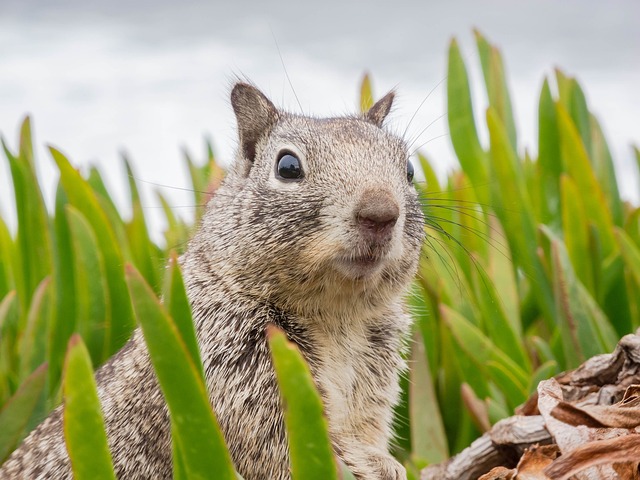Understanding squirrel behavior, including their reliance on visual and auditory cues, preference for cover, and sensitivity to high-pitched sounds, is key to effective squirrel infestation treatment. Strategically place deterrents in exposed zones and use visual barriers like netting or reflective objects for a tailored, humane approach. Trap options vary from live traps for capture and relocation to lethal methods like snap traps and poison baits, with successful control requiring combination and strategic placement. Prevent reinfestation with scent-based repellents and physical barriers, regularly inspecting and maintaining these measures. Balance control methods with safety and ethics, prioritizing non-lethal tactics initially, using lethal traps responsibly, and choosing eco-friendly deterrents to protect the environment. Regularly inspect property for entry points to seal them off proactively.
Squirrels can quickly turn into a nuisance, causing damage to property and gardens. If you’re facing a squirrel infestation, understanding their behavior is key to effective control. This article guides you through a comprehensive approach to treating squirrel problems, from setting traps tailored to different species to choosing deterrents that prevent reinfestation. Learn about safety precautions and ethical considerations to ensure humane and successful squirrel management.
Understanding Squirrel Behavior for Effective Deterrence
Understanding squirrel behavior is crucial in effective squirrel infestation treatment. These rodents are highly intelligent and adaptive, quickly learning from their experiences to avoid perceived threats. They are particularly sensitive to visual and auditory cues, using them extensively for communication and navigation. To deter squirrels, it’s essential to consider these instincts. For example, squirrels often avoid areas with minimal cover or open spaces where they’re easily visible to predators. Utilizing this knowledge, strategic placement of deterrents in exposed zones can be effective.
Additionally, squirrels have keen hearing, making high-pitched sounds or sudden movements near their nests ineffective and potentially provocative. Instead, visual barriers like netting or reflective objects that move with the wind can prove more successful. Understanding how squirrels interact with their environment enables homeowners to implement tailored solutions for squirrel control, ensuring safe and humane practices while addressing the infestation effectively.
Types of Traps and Their Applications in Squirrel Control
Squirrels can be a nuisance, especially when they invade homes or gardens in search of food and shelter. To address a squirrel infestation treatment effectively, understanding various trap options is key. Live traps are one common type, designed to capture squirrels humanely for later relocation. These traps are ideal for areas where non-lethal control is preferred, like near residential properties or structures with sentimental value.
Another category includes lethal traps, such as snap traps and poison baits, which offer more immediate results. Snap traps are effective for targeted removal of problem squirrels, while poison baits should be used cautiously, following local regulations to prevent non-target species from being affected. For thorough squirrel control, a combination of trap types and strategic placement can prove successful, ensuring an end to unwanted squirrel visitors.
Choosing the Right Deterrents to Prevent Reinfestation
After successfully addressing a squirrel infestation, preventing reinfestation is key. The first step in this process involves selecting the most effective deterrents. Traditional repellents, such as scent-based deterrents, can be useful but often require frequent application due to their short-lived effectiveness. Alternatively, physical barriers like metal mesh or wire cages offer longer-lasting protection by completely blocking access points used by squirrels.
When choosing deterrents, consider the specific entry points and behaviors of the squirrel species in your area. For example, tree-climbing squirrels might require branch-level barriers, while ground-dwelling squirrels could be better controlled with underground traps or chemical repellents specifically designed to discourage digging. Regular inspection and maintenance of these deterrents are essential to ensure their continued effectiveness as part of a comprehensive squirrel infestation treatment strategy.
Safety Precautions and Ethical Considerations for Squirrel Management
When addressing a squirrel infestation, it’s crucial to balance effective control with safety and ethical considerations. Using traps or deterrents requires careful thought to minimize potential harm to both the squirrels and other wildlife, as well as human safety. Always prioritize non-lethal methods initially, such as habitat modification or scare tactics, as they offer humane alternatives.
If using live traps, ensure proper handling and prompt release of captured squirrels away from residential areas, ideally in suitable wilderness habitats. For deterrents, opt for eco-friendly options like scent repellents or noise makers, avoiding toxic chemicals that could impact the environment or non-target species. Regularly inspecting your property for squirrel entry points and sealing them off is a proactive approach that complements these ethical management strategies in the fight against squirrel infestations.
When dealing with a squirrel infestation, understanding their behavior is key. By combining various traps tailored to specific situations and utilizing effective deterrents, homeowners can achieve successful squirrel control. Remember to choose humane methods, follow safety guidelines, and consult professionals when needed. With the right approach, it’s possible to manage and prevent reinfestation, ensuring a peaceful home environment free from unwanted squirrels. This comprehensive strategy addresses the squirrel infestation treatment while prioritizing ethical considerations for these mischievous creatures.
